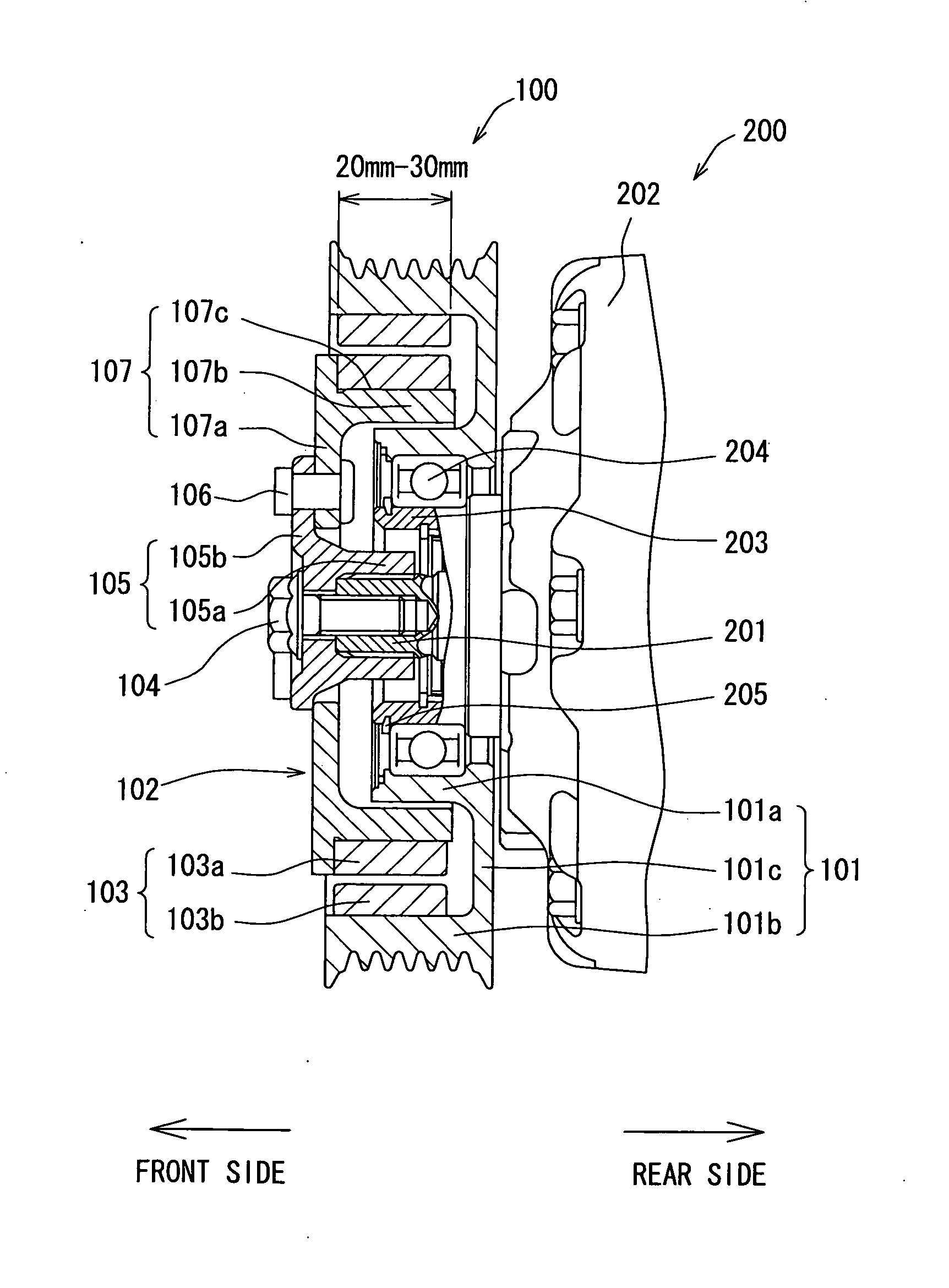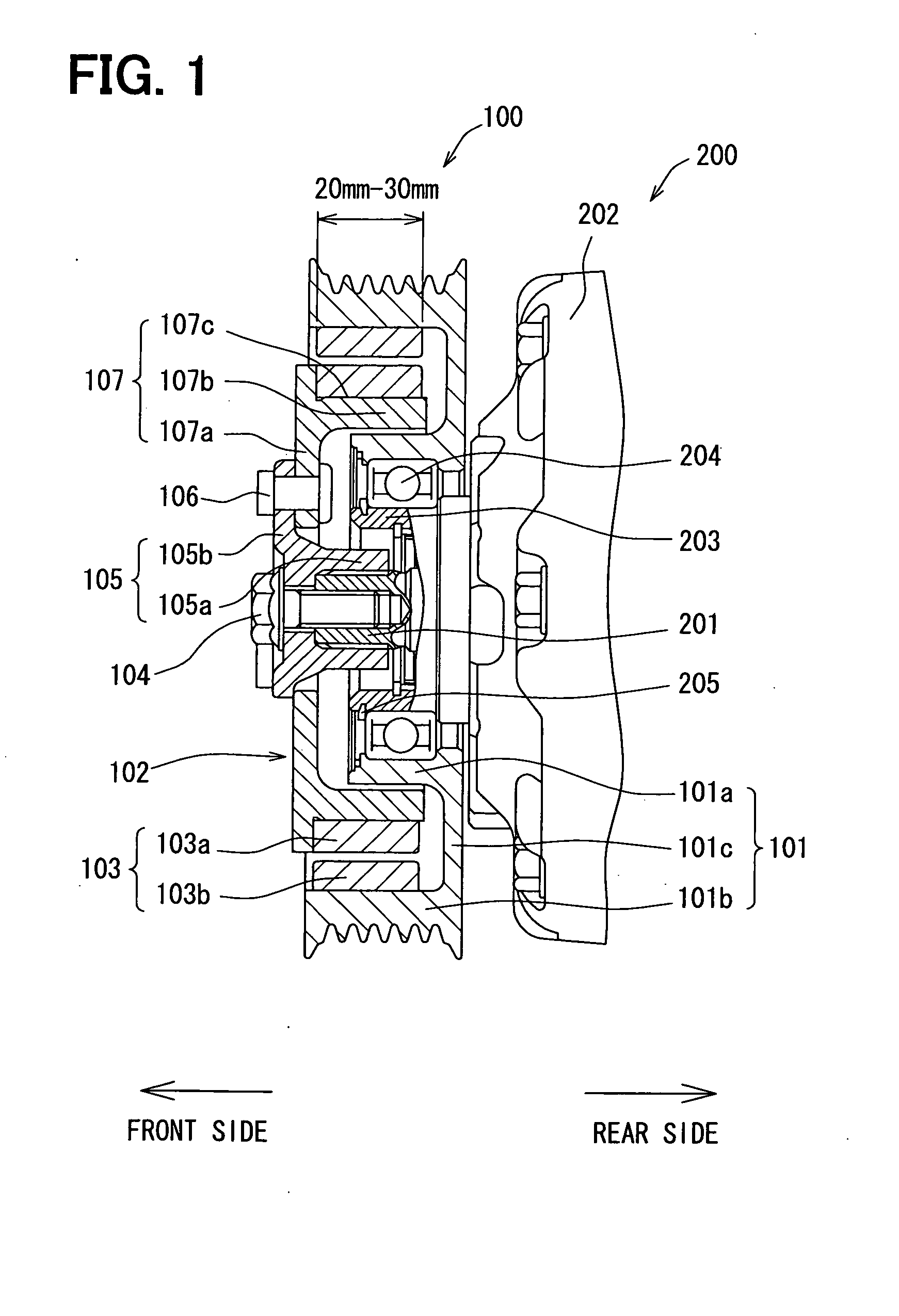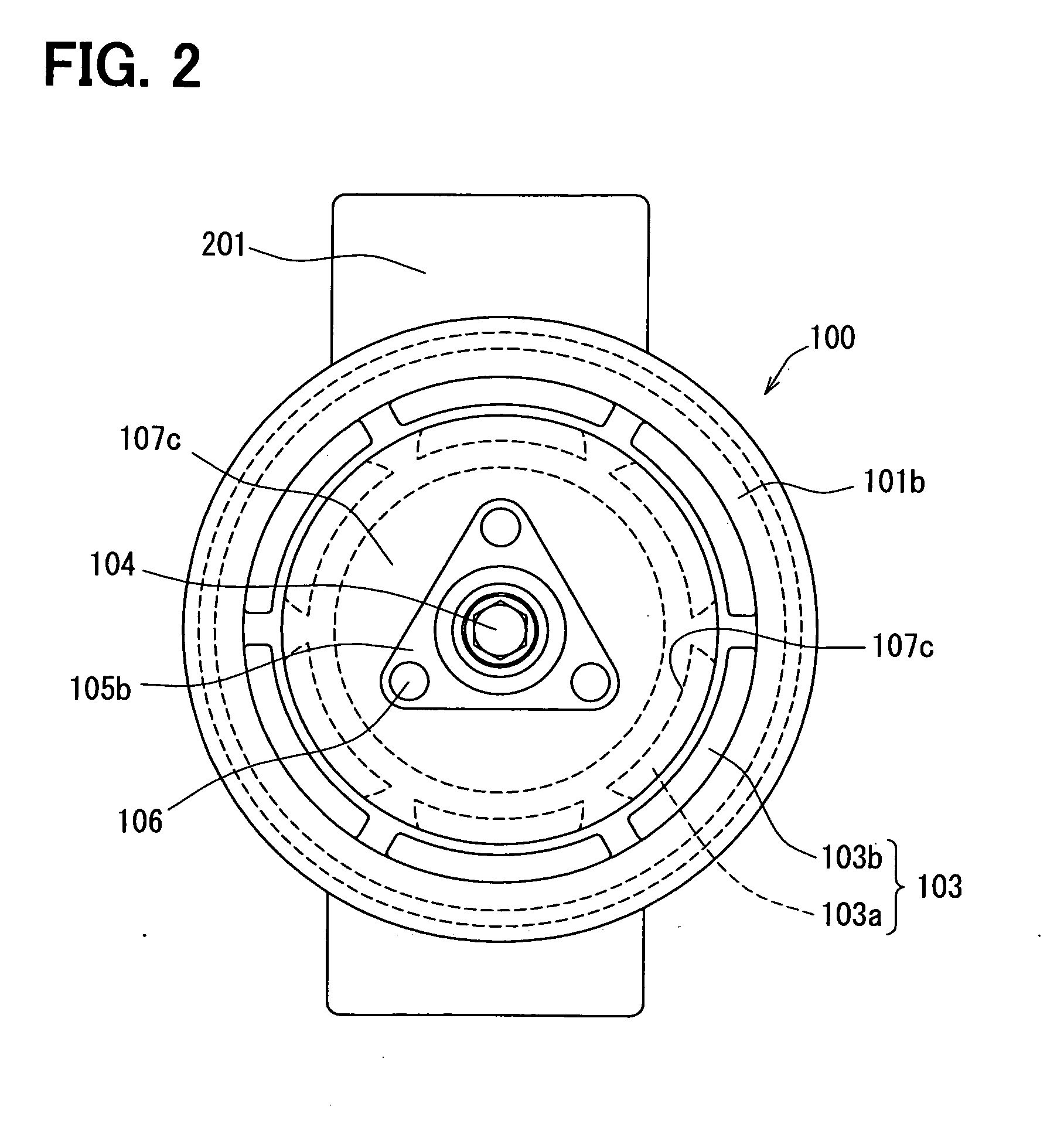Power transmission device
a transmission device and power technology, applied in the direction of magnetically actuated clutches, clutches, mechanical equipment, etc., can solve the problems of shortened service life impracticality, vibration generated by the power transmission device, etc., to reduce the spring constant of the damper mechanism and reduce the natural frequency
- Summary
- Abstract
- Description
- Claims
- Application Information
AI Technical Summary
Benefits of technology
Problems solved by technology
Method used
Image
Examples
first embodiment
[0023]First, the structure according to a first embodiment of the present invention will be described below with reference to FIGS. 1 and 2. FIG. 1 is a cross-sectional view of a power transmission device 100 in the first embodiment. The power transmission device 100 of the embodiment transmits a driving force from a vehicle-mounted driving source, such as an internal combustion engine (not shown) or a motor for vehicle traveling, to a compressor 200 included in a refrigeration cycle of an air conditioner for a vehicle via a belt (not shown).
[0024]The power transmission device 100 includes a pulley 101 mechanically coupled to the vehicle driving source via the belt, a hub 102 arranged coaxially with the pulley 101 and mechanically coupled to a drive shaft 201 of the compressor 200, and a magnetic join portion 103 disposed in both pulley 101 and hub 102. The magnetic join portion 103 is adapted to transmit a rotary driving force from the pulley 101 to the hub 102 by a magnetic force,...
second embodiment
[0048]Next, the structure according to a second embodiment of the present invention will be described below with reference to FIG. 5. FIG. 5 is a cross-sectional view of a power transmission device 300 in the second embodiment. The second embodiment differs from the first embodiment in arrangement of driven permanent magnets 303a and driving permanent magnets 303b of the magnetic join portion 303. In the following description, the same components as those of the power transmission device 100 of the first embodiment, namely, the compressor 200, the drive shaft 201, the housing 202, the boss 203, the radial bearing 204, the collar 205, the bolt 104, the inner hub 105, and the rivet 106 are designated by the same reference numerals in FIG. 5, and the description thereof will be omitted below.
[0049]A pulley 301 of the embodiment includes an inner ring 301a rotatably supported by the boss 203 of the housing 202 via the radial bearing 204, an outer ring 301b having V-like grooves formed a...
third embodiment
[0053]Although in the above first and second embodiments, the present invention is applied to the pulley as the power transmission device by way of example, the present invention is not limited to the pulley. Alternatively, the present invention may be applied to an electromagnetic clutch as a power transmission device. When the present invention is applied to the electromagnetic clutch, the magnetic join portion is used instead of a rubber damper used in a conventional electromagnetic clutch, like the first and second embodiments.
[0054]Now, a third embodiment of the present invention applied to the electromagnetic clutch will be described below with reference to FIGS. 7 and 8. FIG. 7 is a cross-sectional view of an electromagnetic clutch 400 of the embodiment.
[0055]The electromagnetic clutch 400 includes a stator 401 fixed to a housing 502 of a compressor 500, a rotor 403 rotatably supported by a boss 503 standing from the housing 401 via a radial bearing 504, a hub 404 attached to...
PUM
 Login to View More
Login to View More Abstract
Description
Claims
Application Information
 Login to View More
Login to View More - R&D
- Intellectual Property
- Life Sciences
- Materials
- Tech Scout
- Unparalleled Data Quality
- Higher Quality Content
- 60% Fewer Hallucinations
Browse by: Latest US Patents, China's latest patents, Technical Efficacy Thesaurus, Application Domain, Technology Topic, Popular Technical Reports.
© 2025 PatSnap. All rights reserved.Legal|Privacy policy|Modern Slavery Act Transparency Statement|Sitemap|About US| Contact US: help@patsnap.com



